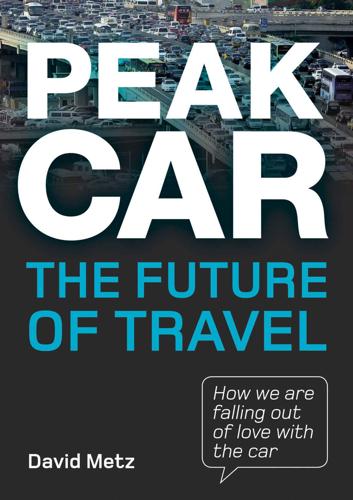
Peak Car: The Future of Travel
by
David Metz
Published 21 Jan 2014
Goldin, I., Cameron, G. and Balarajan, M. (2011) Exceptional People: how migration shaped our world and will define our future, Princeton NJ: Princeton University Press. Goodwin, P. (2012a) Three Views on Peak Car, World Transport Policy and Practice, 17.4, 8-17. Goodwin, P. (2012b) Peak Travel, Peak Car and the Future of Mobility: Evidence, Unresolved Issues, Policy Implications, and a Research Agenda, Discussion Paper 2012-13, International Transport Forum, Paris: OECD. Goodwin, P. (2013) Get Britain Cycling: Report from the Inquiry, London: All-Party Parliamentary Cycling Group. Goodwin, P. and Van Dender, K. (2013) ‘Peak Car’ – Themes and Issues, Transport Reviews, 33(3), 243-254. Gordon, R. (2012) Is US Economic Growth Over?
…
My previous book, The Limits to Travel, published in 2008, reached only a professional readership. The title of this book, Peak Car, reflects the idea that car use in developed economies has reached a maximum. Car ownership and use has grown steadily over the past century to reach a peak, from which it may be declining, at least in certain locations such as large and growing cities. The evidence to support this contention is emerging, as are some ideas about what is happening in society that has led to this reversal of trend. Cessation of growth of car use is helpful in the context of concerns about carbon emissions and climate change. The term ‘peak car’ was popularised by Phil Goodwin, formerly Professor of Transport Policy at the Centre for Transport Studies, University College London, and currently Emeritus Professor.
…
The data for 1993 to the present are as estimated by Transport for London; the data prior to 1993 are my estimates, reflecting the growth of car ownership in Britain generally; and the extrapolation into the future is based on expected population growth, assuming no additional annual car trips are made because road capacity continues to be constrained. This Figure is the clearest manifestation of the ‘peak car’ phenomenon. The lower trajectory in the Figure shows an alternative pathway that reaches the same outcome expected for London. For cities in developed countries, we are where we are and cannot now follow the path not taken. What historians would term the ‘counterfactual’ is of no more than theoretical interest. But for cities in developing countries still with low car ownership, there is the possibility of avoiding peak car, instead ‘tunnelling under the peak’, so to speak, lessening congestion, saving resources and reducing cumulative greenhouse gas and pollutant emissions.
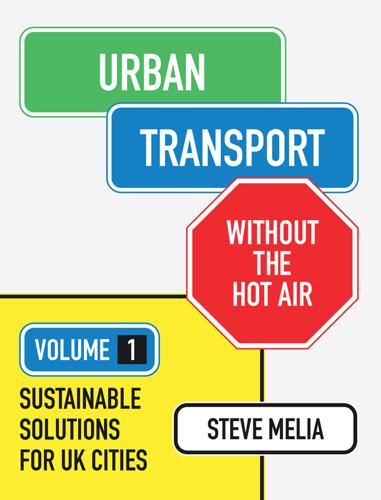
Urban Transport Without the Hot Air, Volume 1
by
Steve Melia
The proportion fell for most of the period since the Second World War until 2005 – three years before the recession – since when it has stabilized.67 Licence holding among young people, particularly young men, has been falling since the early 1990s in Britain, and similar trends have been observed across several other developed countries.68 The average distance driven per person has also been falling slightly in Britain and elsewhere, leading some academics to write about ‘peak car’. The jury is still out on the reasons for all this (there are many), but we may be seeing the start of a longer-term shift.69 Part II will consider some of the implications of this. Myths: • Road building boosts the economy. • If you close a road, all the traffic is forced on to surrounding roads
…
Road building, rail expansion, bus rapid transit (BRT) and road pricing are all portrayed as weapons in the fight against the evil of congestion; and yet congestion never seems to get much better. After a brief improvement during the recession of 2008 to 2012, average speeds on the roads of Britain’s core cities have continued their long-term downward trend.413 (The ‘peak car’ fall in driving per person has been offset by more people and more cars.) There is a wide measure of consensus about the cause of the problem if not the solution. Providing there are enough people with enough vehicles wanting to use a road, vehicles will continue to fill it until congestion slows everyone down and some people start looking for alternatives, like travelling off-peak, using a different mode or avoiding some journeys altogether.
…
Transportation Research Part A: Policy and Practice. 41 (10), pp. 934-48. 67 DfT (2012) ‘National travel survey’. Table NTS 0205. On: www.gov.uk. 68 Delbosc, A. and Currie, G. (2013) ‘Causes of youth licensing decline: a synthesis of evidence’. Transport Reviews. 33 (3), pp. 271-90. 69 See for example: Goodwin, P. and Van Dender, K. (2013) ‘“Peak car” — themes and issues’. Transport Reviews. 33 (3), pp. 243-54, and: IfMR (2013) ‘Mobility Y: the emerging travel patterns of Generation Y’. Munich: Institute for Mobility Research. 4 “Roads and airports benefit the economy” 70 Confederation of British Industry (2012) Bold thinking: road report.
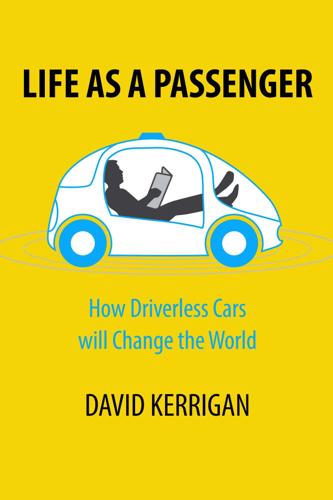
Life as a Passenger: How Driverless Cars Will Change the World
by
David Kerrigan
Published 18 Jun 2017
Rival company Lyft provides over 20 million rides per month. Ride sharing is currently responsible for about 4 percent of the miles traveled by car globally and Morgan Stanley believe the number will be nearly 30 percent by the year 2030.[59] We’ll look at ownership and its alternatives in more detail in Chapter 5. Peak Car Peak car[60] is a term popularised by Phil Goodwin, Professor of Transport Policy, UCL. It is a hypothesis that motor vehicle distance traveled per capita, has peaked and will now reduce. The theory was developed as an alternative to the prevailing market saturation model, which suggested that car use would saturate and then remain reasonably constant, and GDP based theories which predict that traffic will increase again as the economy improves, linking recent traffic reductions to the recent recession.
…
The deep irony is that cities rarely require developers to construct enough affordable housing, but they pass strict laws making sure vehicles can be adequately housed. "We don't force [developers] to build the right number of bedrooms for people! We just force them to build the right number of bedrooms for cars," according to Jeffrey Tumlin, Director of Strategy for Nelson Nygaard, a parking consultancy.[52] Millennials, On-Demand & Peak Car After almost a century of virtually uninterrupted growth, there are signs that the dominance of the car may be waning in some circles, before the arrival of any self-driving cars. This may signal the beginning of an opportunity for change, or may simply be a temporary change in attitudes and priorities.
…
Urban Land Institute Terwilliger Center for Housing: 19. 2014 [52] https://twitter.com/NelsonNygaard/status/684042745216798720 [53] http://www.uspirg.org/news/usp/new-report-shows-mounting-evidence-millennials%E2%80%99-shift-away-driving [54] https://www.jtlu.org/index.php/jtlu/article/view/751 [55] http://www.cnet.com/uk/news/a-future-of-self-driving-cars-were-ready-now/ [56] http://www.bbc.com/news/business-35242514 [57] https://www.gov.uk/government/statistics/national-travel-survey-2014 [58] http://www.people-press.org/2014/06/12/political-polarization-in-the-american-public/ [59] http://www.morganstanley.com/ideas/car-of-future-is-autonomous-electric-shared-mobility [60] https://en.wikipedia.org/wiki/Peak_car [61] https://www.gov.uk/government/uploads/system/uploads/attachment_data/file/411471/road-traffic-forecasts-2015.pdf [62] https://en.wikipedia.org/wiki/Marchetti%27s_constant [63] https://www.washingtonpost.com/news/in-theory/wp/2016/02/29/are-americans-leaving-cars-behind/ [64] Door to Door: The Magnificent, Maddening, Mysterious World of Transportation, Edward Humes, 2016 [65] http://la.curbed.com/2016/9/9/12824240/self-driving-cars-plan-los-angeles [66] http://sustainablemobility.ei.columbia.edu/files/2012/12/Transforming-Personal-Mobility-Jan-27-20132.pdf [67] https://en.wikipedia.org/wiki/Sinclair_C5 [68] http://www.segway.com/ [69] https://www.wired.com/2016/10/teslas-self-driving-car-plan-seems-insane-just-might-work/ [70] Alphabet is Google’s parent company and owner of Waymo, formerly known as Google Self Driving Car project
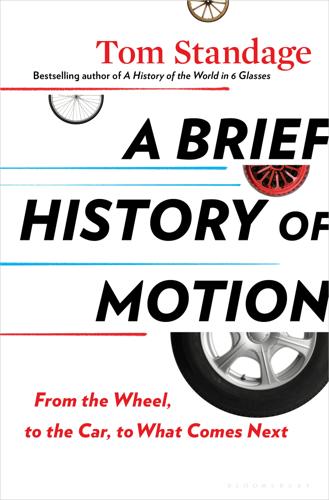
A Brief History of Motion: From the Wheel, to the Car, to What Comes Next
by
Tom Standage
Published 16 Aug 2021
Yet it does not appear imminent … Individual decisions have consistently favored greater car use, whether in spite of public policies to discourage it, or because of policies that encourage it. There is, then, good reason to conclude that the car has triumphed, and that its opponents are spitting into the wind.” THE EVIDENCE FOR “PEAK CAR” But in the 2020s there are clear signs that enthusiasm for cars is finally waning. Even some people within the industry now acknowledge that the world is now at, or has passed, “peak car”—the point at which car ownership and use level off and start to decline. Car production may never exceed its level in 2017. “It could well be that we passed the peak in global automotive production,” said Volkmar Denner, chief executive of Robert Bosch, the world’s largest maker of car parts, in January 2020.
…
Instead, the growing Chinese middle class, which has shown itself to be receptive to new services and products, seems happy to skip the hassle of car ownership in favor of on-demand mobility services arranged via smartphone. If so, the motor that had been driving global car sales has been switched off. Evidence for peak car in Western countries, meanwhile, has been accumulating for some time. In America, the total number of vehicle miles traveled has continued to increase. But it has been growing more slowly than both the total number of vehicles and the population. The number of miles driven per vehicle, and per person of driving age, both peaked in 2004 and have since fallen to levels last seen in the 1990s.
…
Perhaps this is due to a wider trend of young people delaying life choices. But it seems unlikely that they will take to driving later. Evidence from Britain suggests that those who learn to drive in their late twenties drive 30 percent less than those who learn a decade earlier. What has caused this change of heart? Peak-car theorists attribute it to several overlapping factors. Most people now live in cities, most vehicle miles are driven in cities rather than rural areas, and the decline in driving is chiefly a decline in urban driving. The cost and hassle of car ownership has increased as traffic congestion has increased and cities have introduced congestion charging zones and pedestrianized parts of city centers and made parking scarcer and more expensive.
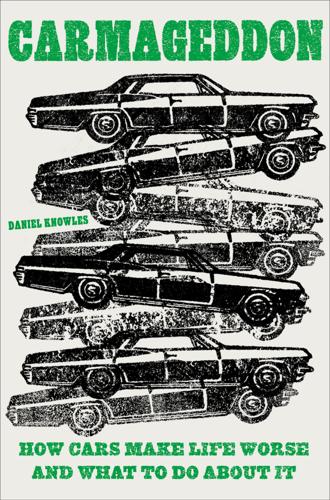
Carmageddon: How Cars Make Life Worse and What to Do About It
by
Daniel Knowles
Published 27 Mar 2023
Jane Jacobs and the Fight Back 6. The Next Frontier 7. Electric Delusions 8. Bionic Duckweed 9. Why You Can’t Beat Traffic 10. Free Parking, Do Not Pass Go 11. Evil Carmakers 12. Gas Guzzler Nation 13. What Causes Traffic Accidents? 14. Bring in the Bikes 15. Go East: Lessons from Japan 16. Winning the Argument 17. Peak Car Conclusion Acknowledgments Index of Searchable Terms INTRODUCTION Around three miles away from where I live in Chicago, southeast from my apartment in Wicker Park, is the most congested stretch of road in the entire United States. Just west of Union Station, once one of the busiest railway stations in the entire world, is the intersection between I-90 and I-290, otherwise known as the Kennedy and Eisenhower Expressways.
…
One of the things that may surprise you, at least if you have gotten used to driving, is that even in America, and certainly in Europe, living without a car need not be impossible. Indeed, for a whole new generation, it is becoming less important than ever to own a vehicle. There is growing reason to think that if they had the choice, fewer people than ever would choose using their own private vehicle to get around. 17 PEAK CAR When I reached the age of seventeen my parents bought me a rather typical birthday present for a seventeen-year-old in England: driving lessons. Growing up in Britain’s motor city, Birmingham, I saw being able to drive a car as an enormously obvious first step toward adult life. I attended a school that was relocated in the 1950s from the city center to Bartley Green, an outer suburb made up of dull gray public housing constructed mostly after the Second World War.
…
People are waiting much longer to do it, but they are ultimately still doing it. Much as I did, young people may be learning to drive later, but for the most part they still seem to be learning to drive. And yet, the millennial turn against cars, modest as it is, offers hope that we may still hit what auto executives ominously call “peak car.” That is the idea that we hit a point where the annual number of car sales begins to decline, and eventually, that we begin to drive less. In the early 2010s, as high oil prices and falling incomes in the wake of the global financial crisis led driving to briefly fall, the theory that people might be turned off cars gripped the car industry.
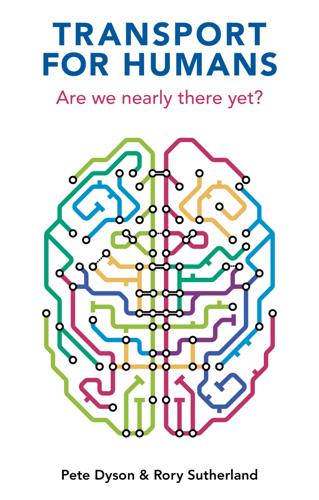
Transport for Humans: Are We Nearly There Yet?
by
Pete Dyson
and
Rory Sutherland
Published 15 Jan 2021
By the middle of 2020 nearly half of US workers said they valued the new flexibility they had been given to stay at home two or three days a week as much as they would a 15% increase in pay.24 But the previous equilibrium was already shifting. Before the pandemic there was already mounting evidence that our patterns of travel were changing. Let’s look at our list from the previous chapter. The average household is travelling less. Total trips per person per year in the UK had declined 8% since 2002.25 Are we past peak car? Vehicle mileage per capita has declined since 2012,26 and in the UK it has fallen 12% since 2002. Comparing 1995–99 with 2010–14 there has been a 36% drop in the number of car driver trips per person made by people aged 17–29.27 Are we making as many short trips? Outside London, bus trips were down by 28% since 2002 according to the Department for Transport.
…
Oxford: WH Freeman Spektrum. 24 This is, incidentally, roughly equal to the average annual household expenditure on transport (which is 13% of the total). 25 The average number of trips fell by 8% between 2002 and 2018: from 1,074 to 986. Department for Transport. 2019. Average number of trips by purpose and main mode (ODS). Report, NTS0409 (https://assets.publishing.service.gov.uk/government/uploads/system/uploads/attachment_data/file/1016918/nts0409). 26 D. Metz. 2013. Peak car and beyond: the fourth era of travel. Transport Reviews 33(3), 255–270. 27 K. Chatterjee, P. Goodwin, T. Schwanen, B. Clark, J. Jain, S. Melia, J. Middleton, A. Plyushteva, M. Ricci, G. Satnos and G. Stokes. 2018. Young people’s travel–what’s changed and why? Review and analysis. Report, UWE Bristol and University of Oxford, January (https://bit.ly/3y9hHSd). 28 Office for National Statistics. 2020.

Bike Boom: The Unexpected Resurgence of Cycling
by
Carlton Reid
Published 14 Jun 2017
Those who don’t have access to cars are often regarded—and frequently regard themselves—as disadvantaged; only enthusiasts think the same about having access to bicycles. Millennials may be turning away from cars because they’d rather be plugged into social media, but that’s a fillip for sit-and-play public transit, not cycling. And the theory of “peak car”—that motor-vehicle use has peaked, and is now falling—is not as statistically solid as it looked during the last recession, when driving most definitely dipped. Terrible for the planet, and bad for both congestion and health, but car purchasing and car use are on the rise again. The joyful practicality of cycling.
…
See also Central Park New Zealand, 210 Newlon, Martha, 121, 135 Ngram Viewer, 221 Nines, Edward H., 26 Noguchi, Ted, 143, 143, 145–146 Northampton, England, 81 Norton, Peter, 27 Oakland, Sam, 116 offset crossings, 71 Only One Road (AAA), 154 OPEC oil crisis, 94, 202 Oregon Bicycle Bill, 116, 141 Outdoor Recreation Resources Commission (ORRRC), 63 Oxford, England, 89–91 Oxnard, California, 70, 71 Page, DeWitt, 222–223 Palo Alto, California, 143–146, 149, 150–152 Parkin, John, 9, 108 parking facilities, 167 Pasadena, California, 21–23 pavement, sidewalk vs., 12 peak car theory, 6 Pearlman, Nancy, 112, 113 pedal-ins, 114 Pelz, Dave, 75 The Perils of the Cycle Path (CTC), 36 Permanent Way, 106 Peugeot bicycles, 62 Philadelphia Bike Coalition, 133 pollution, 63, 130–131, xvi Porte, Joe and Ilana, 110 Portland, Oregon, 1, 116 Portsmouth, England, 97–99 propensity to cycle, 11 protected intersections, 70–72, 71 Provos, 194–196 Pucher, John, 3, 157, 158–159, 209 rail trails, 16, 17 railways, 86 Raleigh bicycles, 83, 89, 117 Randel, William Pierce, 51–52 Raskin, A.H., 132 Rasmussen, Paul, 60–61 rationing, 94–95 Reading, England, 81 “Red Zone” proposal, 134 reflectors, 151 Reinhold, Robert, 135 rental bicycles, 29, 66 Richard’s Bicycle Book (Ballantine), 92–93, 118–119, 132, 164 Ride On!!

Are Trams Socialist?: Why Britain Has No Transport Policy
by
Christian Wolmar
Published 19 May 2016
As he explained in the introduction to the report, we concluded, since it is obviously the desire of society to use the motor vehicle to the full, that the only practical basis for a study of the present kind was to accept this desire as a starting point and then to explore and demonstrate its consequences.⁸ In the preface, Sir Geoffrey Crowther, a former editor of The Economist, wrote: ‘One of the peculiarities of the motor car is that virtually everybody wants to have one.’⁹ It was that misconception which was to fuel transport policy throughout this period. A neat illustration of the Buchanan ideal is the small Berkshire town of Newbury, which he used as an example. He argued that it was essential to build a road network in the town to cope with ‘peak car’, which entailed the reorganization of towns around this priority. In Newbury, with a population of just 30,000, his estimate was that commuting car numbers would increase threefold, from 3,000 to 9,000. He then admitted that the existing town structure simply could not accommodate this growth: We did not construct a peak hour flow diagram for the year 2010 on the basis of the existing street system because it was quite obvious that the existing system could not possibly carry the enormously increased loads.¹⁰ In other words, to meet the needs of the motorists, the whole town centre would have to be destroyed and rebuilt because the urban motorways and what were known as distributor roads (new roads aimed at better ‘distributing the traffic’) would channel traffic into the traditional main street.

Stakeholder Capitalism: A Global Economy That Works for Progress, People and Planet
by
Klaus Schwab
Published 7 Jan 2021
sref=61mHmpU4. 41 “How Greta Thunberg and ‘Flygskam’ Are Shaking the Global Airline Industry,” Nicole Lyn Pesce, MarketWatch, December 2019, https://www.marketwatch.com/story/flygskam-is-the-swedish-travel-trend-that-could-shake-the-global-airline-industry-2019-06-20. 42 “This Is What Peak Car Looks Like,” Keith Naughton and David Welch, Bloomberg Businessweek, February 2019, https://www.bloomberg.com/news/features/2019-02-28/this-is-what-peak-car-looks-like. 43 “COVID-19 Made Cities More Bike-Friendly—Here's How to Keep Them That Way,” Sandra Caballero and Philippe Rapin, World Economic Forum Agenda, June 2020, https://www.weforum.org/agenda/2020/06/covid-19-made-cities-more-bike-friendly-here-s-how-to-keep-them-that-way/. 44 “Germany Calls for a New Trans Europe Express TEE 2.0 Network,” International Railway Journal, September 2020, https://www.railjournal.com/passenger/main-line/germany-calls-for-a-new-trans-europe-express-tee-2-0-network/. 45 ESG stands for environmental, social, and governance. 46 “EU Emissions Trading System (EU ETS),” European Commission, https://ec.europa.eu/clima/policies/ets_en. 47 “The European Union Emissions Trading System Reduced CO2 Emissions Despite Low Prices,” Patrick Bayer and Michaël Aklin, PNAS Proceedings of the National Academy of Sciences of the United States of America, April 2020, https://www.pnas.org/content/117/16/8804. 48 Alliance of CEO Climate Leaders, World Economic Forum, https://www.weforum.org/projects/alliance-of-ceo-climate-leaders. 49 “The Net-Zero Challenge: Fast-Forward to Decisive Climate Action,” World Economic Forum and Boston Consulting Group, January 2020, http://www3.weforum.org/docs/WEF_The_Net_Zero_Challenge.pdf. 50 Greta Thunberg, World Economic Forum Annual Meeting, held in Davos, Switzerland, January 2019.
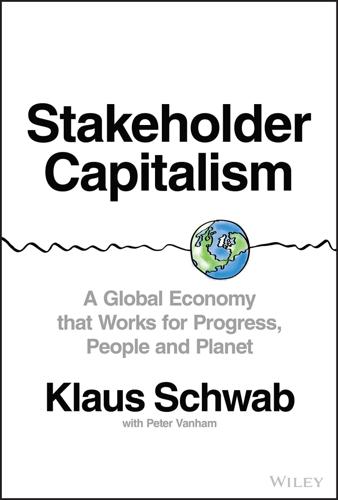
Stakeholder Capitalism: A Global Economy That Works for Progress, People and Planet
by
Klaus Schwab
and
Peter Vanham
Published 27 Jan 2021
sref=61mHmpU4. 41 “How Greta Thunberg and ‘Flygskam’ Are Shaking the Global Airline Industry,” Nicole Lyn Pesce, MarketWatch, December 2019, https://www.marketwatch.com/story/flygskam-is-the-swedish-travel-trend-that-could-shake-the-global-airline-industry-2019-06-20. 42 “This Is What Peak Car Looks Like,” Keith Naughton and David Welch, Bloomberg Businessweek, February 2019, https://www.bloomberg.com/news/features/2019-02-28/this-is-what-peak-car-looks-like. 43 “COVID-19 Made Cities More Bike-Friendly—Here's How to Keep Them That Way,” Sandra Caballero and Philippe Rapin, World Economic Forum Agenda, June 2020, https://www.weforum.org/agenda/2020/06/covid-19-made-cities-more-bike-friendly-here-s-how-to-keep-them-that-way/. 44 “Germany Calls for a New Trans Europe Express TEE 2.0 Network,” International Railway Journal, September 2020, https://www.railjournal.com/passenger/main-line/germany-calls-for-a-new-trans-europe-express-tee-2-0-network/. 45 ESG stands for environmental, social, and governance. 46 “EU Emissions Trading System (EU ETS),” European Commission, https://ec.europa.eu/clima/policies/ets_en. 47 “The European Union Emissions Trading System Reduced CO2 Emissions Despite Low Prices,” Patrick Bayer and Michaël Aklin, PNAS Proceedings of the National Academy of Sciences of the United States of America, April 2020, https://www.pnas.org/content/117/16/8804. 48 Alliance of CEO Climate Leaders, World Economic Forum, https://www.weforum.org/projects/alliance-of-ceo-climate-leaders. 49 “The Net-Zero Challenge: Fast-Forward to Decisive Climate Action,” World Economic Forum and Boston Consulting Group, January 2020, http://www3.weforum.org/docs/WEF_The_Net_Zero_Challenge.pdf. 50 Greta Thunberg, World Economic Forum Annual Meeting, held in Davos, Switzerland, January 2019.
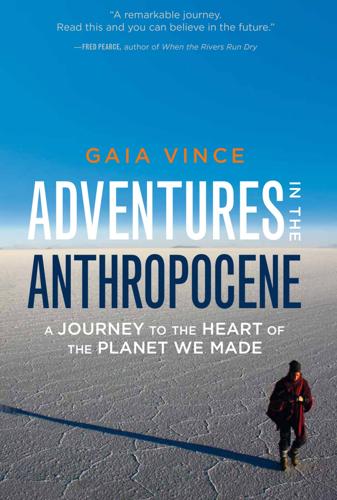
Adventures in the Anthropocene: A Journey to the Heart of the Planet We Made
by
Gaia Vince
Published 19 Oct 2014
In Bogotá, for example, cars are banned from the city on Sundays, when the streets fill with pedestrians, cyclists and roller-bladers. Americans, who currently spend an average nine years of their lives sitting in their cars, may have now passed ‘peak car’, with car ownership and driving rates dropping.21 Even in China, the world’s biggest car market (where ownership has risen twentyfold since 2000), ‘peak car’ could come sooner than the two decades estimated to reach saturation: fuel prices are escalating, the cities’ brand new six-lane highways are already clogged with traffic and car fumes, and with more of the population living in dense cities and ‘meeting’ on social networks, car ownership is increasingly becoming an inconvenience.
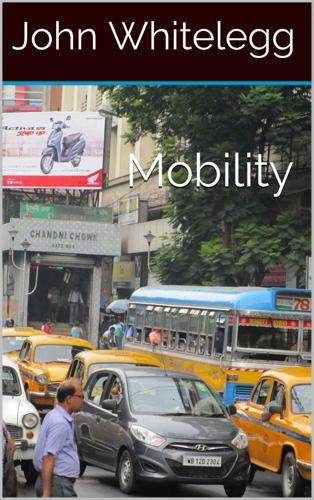
Mobility: A New Urban Design and Transport Planning Philosophy for a Sustainable Future
by
John Whitelegg
Published 1 Sep 2015
Morton, A (2014) The East-West Link, World Transport Policy and Practice, volume 20, number 2/3. NATS (2009), Flight Plan to cut 10% of CO2 from UK air traffic control, News Release, 10.3.09, NATS, Fareham, UK. Newman, P and Kenworthy, J (1999) Sustainability and cities: overcoming automobile dependence, Island Press, Washington DC. Newman, P, Kenworthy, J and Glazebrook, G (2013) Peak car use and the rise of global rail: why this is happening and what it means for large and small cities, Journal of Transportation Technologies, 3(4) 272-287. NICE (2008) Physical activity and the environment, Public Health Guidance, 8 (PH8), National Institute for Health and Clinical Excellence. OECD (1999) Environmentally Sustainable Transport.

The End of Traffic and the Future of Transport: Second Edition
by
David Levinson
and
Kevin Krizek
Published 17 Aug 2015
Source: US Census Statistical Abstract http://www.census.gov/prod/2/gen/96statab/app4.pdf and US Federal Highway Administration: Highway Statistics http://www.fhwa.dot.gov/policyinformation/statistics/2012/vmt422c.cfm 24 The free ascent of Dawn Wall, see: http://news.nationalgeographic.com/news/2015/01/150114-climbing-yosemite-caldwell-jorgeson-capitan/ 25 Millard-Ball, Adam and Schipper, Lee (2011) Are we reaching peak travel? Trends in passenger transport in eight industrialized countries Transport Reviews 31(3) pp. 347-378. also Metz, David (2013). Peak car and beyond: the fourth era of travel. Transport Reviews, 33(3), 255-270. 26 This does not mean there will never be a year in which car travel again rises (It rose overall and on a per capita basis in 2014, for instance, a year with an expanding economy and falling fuel prices). 27 Figure 1.2 Source: Based on Bureau of Transportation Statistics (2015) National Transportation Statistics Table 1-4: Public Road and Street Mileage in the United States by Type of Surface(a) (Thousands of miles). http://www.rita.dot.gov/bts/sites/rita.dot.gov.bts/files/publications/national_transportation_statistics/html/table_01_04.html. 28 Figure 1.3 Source: US Census Bureau.
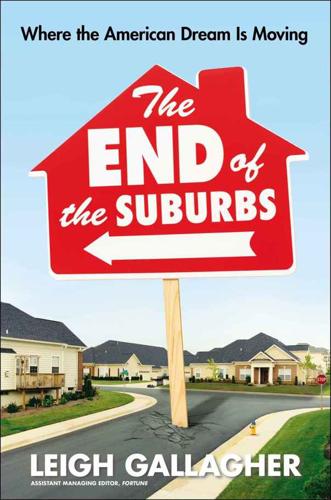
The End of the Suburbs: Where the American Dream Is Moving
by
Leigh Gallagher
Published 26 Jun 2013
And in addition to miles driven and automobiles registered, the share of trips Americans make by car has been on a downward trend as well—one that started in 2001. “America’s transportation preferences appear to be changing,” says Phineas Baxandall, coauthor of the PIRG report. Some in transportation circles are calling these collective changes signs that we’ve reached or are about to reach “peak car.” One reason for the change in behavior may be an ever-increasing awareness about the need to be more responsible with energy use. Consider the success of the Prius and other hybrids, or the rise of Zipcar, the car-sharing service that saw membership grow to close to eight hundred thousand before rental car giant Avis bought it in early 2013.
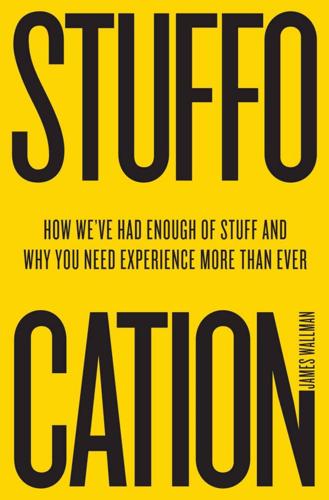
Stuffocation
by
James Wallman
Published 6 Dec 2013
By 1990, less than 40% of the global population lived in a city, but as of 2010, more than half of all people live in an urban area. By 2030, 6 out of every 10 people will live in a city, and by 2050, this proportion will increase to 7 out of 10 people.” Source: World Health Organization Also, Ariel Schwartz, “We Are Approaching Peak Car Use”, Fast Company, 5 July 2011, and Richard Florida, The Great Reset: How the Post-Crash Economy Will Change the Way We Live and Work (New York: HarperBusiness, 2011). For a quick introduction, read Richard Florida, “The Fading Differentiation between City and Suburb”, Urban Land Magazine (urbanland.uli.org), January 2013.
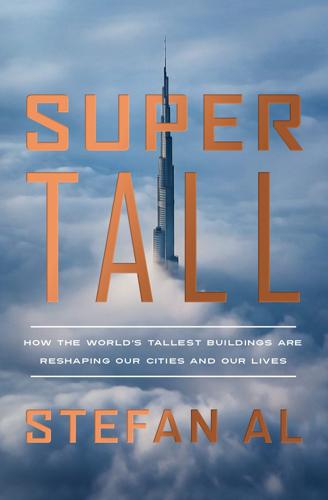
Supertall: How the World's Tallest Buildings Are Reshaping Our Cities and Our Lives
by
Stefan Al
Published 11 Apr 2022
“Navvies: Workers Who Built the Railways,” National Railway Museum, May 16, 2018, https://www.railwaymuseum.org.uk/. 7.Le Corbusier, The City of To-morrow and Its Planning, 131. 8.Michael Southworth and Eran Ben-Joseph, Streets and the Shaping of Towns and Cities (Washington, DC: Island Press, 2013). 9.“A Service of World-Class Quality,” MTR, https://www.mtr.com.hk. 10.Peter Newman and Jeff Kenworthy, “Peak Car Use: Understanding the Demise of Automobile Dependence,” World Transport Policy and Practice 17, no. 2 (2011): 35–36; UN Habitat, Planning and Design for Sustainable Urban Mobility: Global Report on Human Settlements 2013 (Nairobi: UN Habitat, 2013). 11.International Energy Agency, “CO2 Emissions from Fuel Combustion by Sector in 2014, in CO2 Emissions from Fuel Combustion,” CO2 Highlights 2016, Paris, 2016. 12.Lawrence D.

Enlightenment Now: The Case for Reason, Science, Humanism, and Progress
by
Steven Pinker
Published 13 Feb 2018
The era of the Beach Boys and American Graffiti is over: half of American eighteen-year-olds do not have a driver’s license.38 The expression “Peak Oil,” which became popular after the energy crises of the 1970s, refers to the year that the world would reach its maximum extraction of petroleum. Ausubel notes that because of the demographic transition, densification, and dematerialization, we may have reached Peak Children, Peak Farmland, Peak Timber, Peak Paper, and Peak Car. Indeed, we may be reaching Peak Stuff: of a hundred commodities Ausubel plotted, thirty-six have peaked in absolute use in the United States, and another fifty-three may be poised to drop (including water, nitrogen, and electricity), leaving only eleven that are still growing. Britons, too, have reached Peak Stuff, having reduced their annual use of material from 15.1 metric tons per person in 2001 to 10.3 metric tons in 2013.39 These remarkable trends required no coercion, legislation, or moralization; they spontaneously unfolded as people made choices about how to live their lives.
…
Robert, 308 optimism attacks on, 39, 49 complacent vs. conditional, 154–5 enlightenment as, 7 historical improvement as basis for, 51, 327–8 Optimism Gap, 40, 115, 225–6, 268 perceived as salesmanship, 49 rational (pessimistic hopefulness, possibilism, protopia, opti-realism), 52, 344–5, 482n55 See also pessimism order improbability of, 15–16, 24, 25 life as, 18–19, 20 meaning of life as creation despite entropy, 17 self-organization, 17–19 Orlando nightclub massacre, 215, 216 Orlov, Vadim Pavlovich, 479n93 Osgood, Charles, 318 Osler, William, 63 Ottoman Empire, 430, 439 Our World in Data (Web site), xviii, 52 Pacification Process, 43 pacifist’s dilemma, 166, 414, 488n10 Paddock, William and Paul, 74 Pagden, Anthony, 482n6 Pagel, Mark, 477n20 Paine, Thomas, 409 Pakistan agriculture in, 76 climate change and, 151 as democracy, 207 and literacy, female, 239, 240 nuclear weapons and, 307–8, 317, 318, 320 polio in, 65 terrorist deaths in, 193 Palin, Sarah, 374–5 Pan-African Parliament, 222 Panama, 85, 86 pantheism, 8, 422 paradox of value (income statistics can mislead) definition of, 82 globalization and, 117 increasing with humanism, 332–3 inequality and, 117 technology and, 117, 332–3 paranormal phenomena, 422, 427, 428 Parfit, Derek, 429 Paris, terrorism and, 219 Paris Agreement on climate, 134, 152, 335, 449 Paris Peace Pact (1928), 163–4 Parker, Dorothy, 248, 277 Parker, Theodore, 223 Pascal, Blaise, 162 Pasteur, Louis, 63 Paulsen, Pat, 332, 365 peace, 13–14, 156–66 democracy as fostering, 162–3 education as fostering, 235 as inherently worthy, 164–5, 166 peacekeeping forces, success of, 404–5 romantic militarism giving way to, 165–6 as self-reinforcing, 164 See also Long Peace; war Peak Car, Carbon, Children, Coal, Paper, Timber, 144 Peak Farmland, 76, 144 Peak Oil, 135 Peak Stuff, 135–6 Peanuts (comic), 377 Pearl Harbor, 196 pedestrian deaths, 179–80, 179 Pelopidas, Benoît, 316 period (zeitgeist) effects, 224–5 happiness and, 272–4, 275 religious belief and, 437–8 See also age (life cycle) effects; cohort effects permafrost, melting, 136 Perry, William, 316, 319 Persia, ancient, 23, 398 Peru, 158, 160 pessimism, 33, 39–52 about democratization, 201 about human rights, 207 about life expectancy, 53 mistaken for moral seriousness, 49 as one-upmanship, 49 and populism, xvii, 50, 343–4 about racism, sexism, and homophobia, 215 and sympathy, expansion of circle of, 49 about terrorism, 191 and Trump’s election, 340 See also fatalism; intellectuals; media; optimism; romantic heroism —CULTURAL PESSIMISM, 33 doomsday scenarios from, 293, 294 German, 165 and happiness, lack of, 263–4, 268 and the humanities, malaise of, 406 quality of life, 247 and romantic militarism, 165–6 about science, 400 —HISTORICAL PESSIMISM, 33 and democracy, 201 and nuclear war, 308 root-causism, 169–71 petroleum carbon-to-hydrogen ratio of, 143 deaths caused by, 146–7 new technologies for use of, 330 See also climate change; coal; energy Pew Research Center, 216, 222 pharmaceutical drugs.
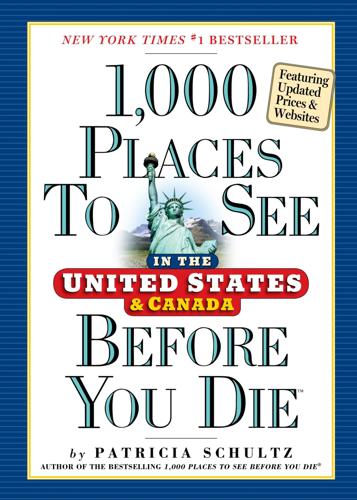
1,000 Places to See in the United States and Canada Before You Die, Updated Ed.
by
Patricia Schultz
Published 13 May 2007
WHERE: Port Hardy is 312 miles/504km north of Victoria on Vancouver Island. Visitor info: Tel 800-663-8843 or 250-561-0432; www.hellobc.com. BC FERRIES: Tel 888-223-3779 or 250-386-3431; www.bcferries.com. Cost: Port Hardy to/from mainland Prince Rupert, foot passenger one-way from US$95/C$100 (off-peak), from US$162/C$170 (peak); car one-way US$209/C$220 (off-peak), US$371/C$390 (peak). BEST TIMES: June and July for the longest days; Aug–Sept for weather. A Spectacular Fishing Resort Afloat in Wilderness KING PACIFIC LODGE Princess Royal Island, British Columbia King Pacific Lodge scarcely fits the typical image of backcountry fishing lodge.